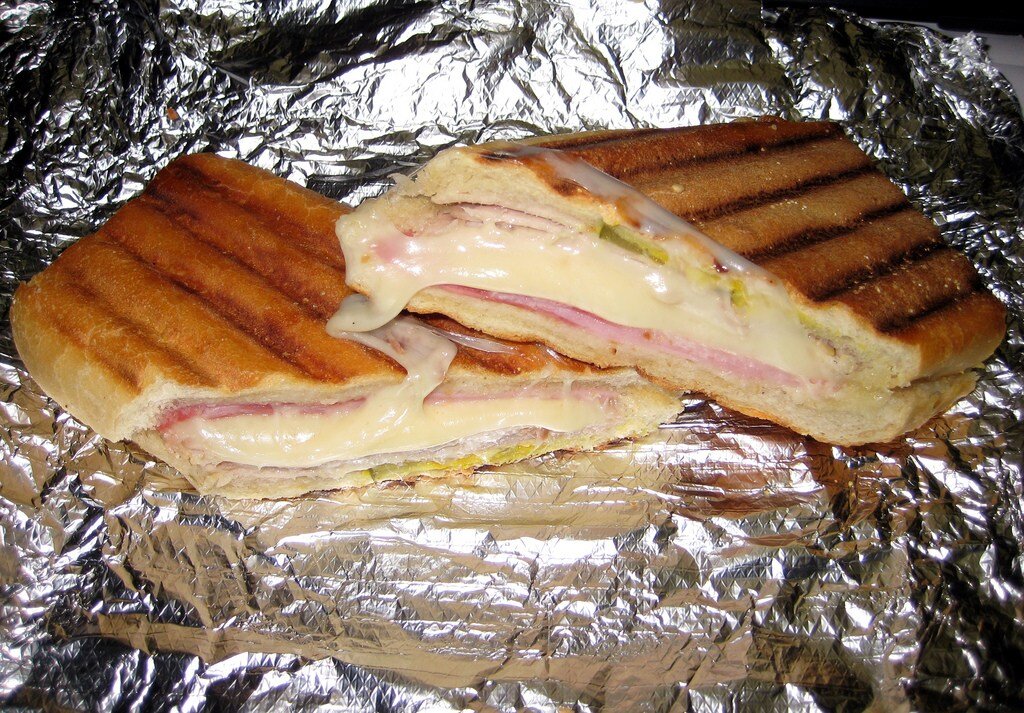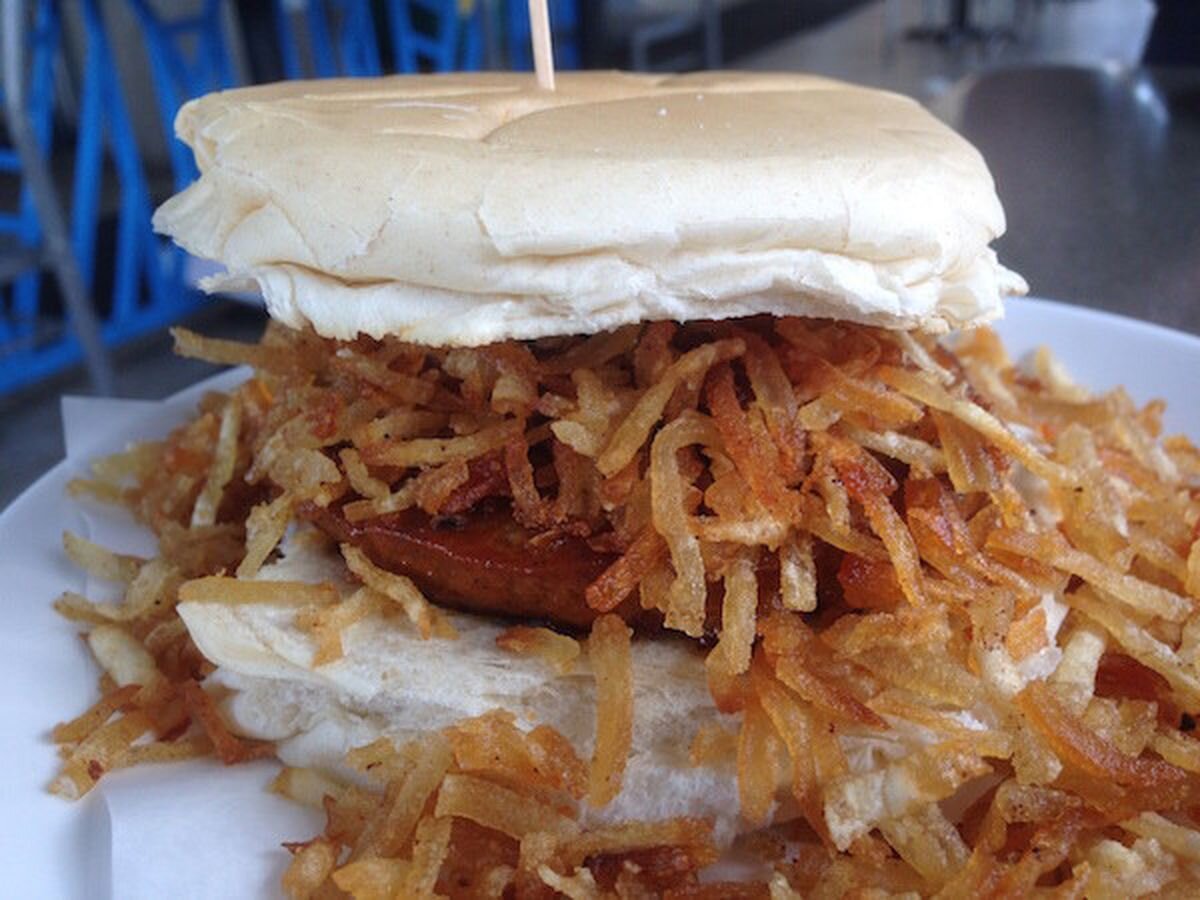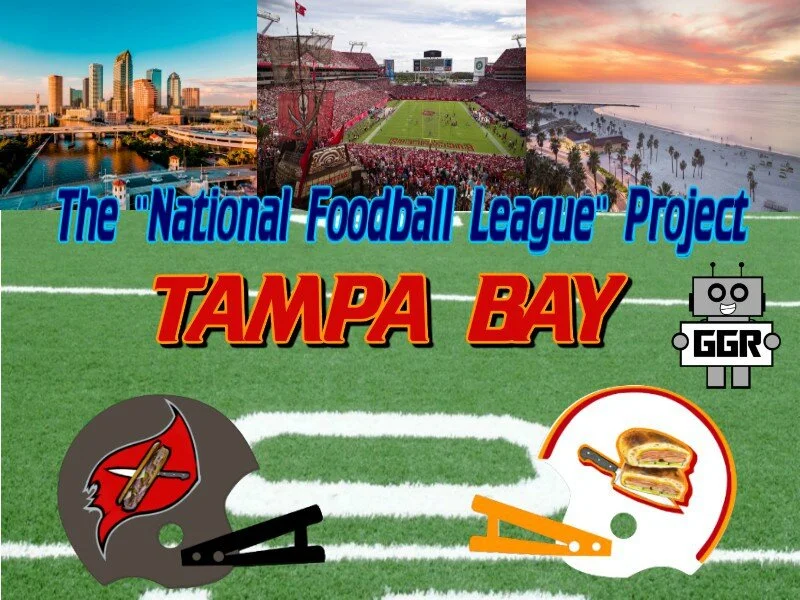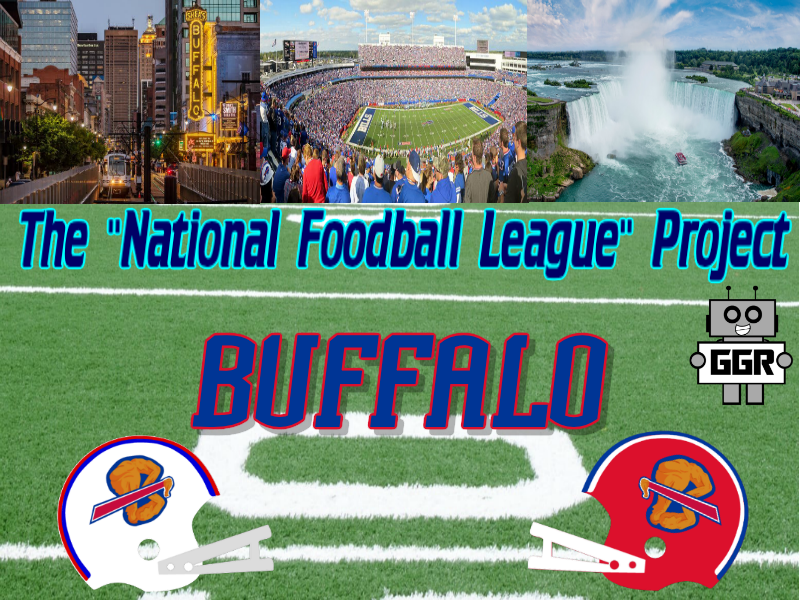"The National Foodball League" Project: Miami
by Mike-ami Lunsford, GGR Editor-in-Chief
Our Florida holidays virtual excursion has led to some fascinating history and some amazing food finds. Something that has been a running theme in our Florida foodball journey has been the culinary contributions of immigrants from all over the world. As we travel down I-75 and cross Alligator Alley, we come upon the Capital of Latin America: Miami.
History
The Tequesta people were living the life along the Atlantic coast for aproximately 2,000 years before contact with Europeans. Warm tropical weather, plentiful seafood, what’s not to love? After Spain and Britain “discovered” Florida, the Tequesta people are believed to have migrated to Cuba in the 1700s. Why would they leave Florida to go to Cuba? Starting in the early 1700s, it was the policy of the Spanish government to forcefully relocate the native peoples of Florida to Cuba so they could be indoctrinated into Catholicism. Most of them died, and those who didn’t were put on the Florida Keys. If you read the Wikipedia article about Miami, it’s implied that the Tequesta “migrated” to Cuba. Just a bit of digging tells you the awful truth.
When the Americans took over ownership of Florida, they built Fort Dallas on the banks of the Miami River. When the Seminole Wars were happening, there were many battles fought in and around the Fort Dallas area. The entire war was another ugly part of American history in regards to their relations with the indigenous people of the area, full of broken treaties and brutal treatment all in the name of clearing land for white settlers. And in fact, the term “Seminole” was an ethnogenesis term (definition here, it explains a lot). The people who made up the group were comprised of the survivors of other tribes who were decimated by European explorers and diseases hundreds of years ago. In addition to those orphaned natives, the Seminole* were also comprised of escaped slaves creating a truly unique group. The descendants of those native people that the Spanish and English colonizers were unable to kill either via musket, sword or disease banded together with those escaped slaves to fight for their freedom in Florida. Unfortunately, we all know how that ended up.
*For more information about the Seminole people, visit their website.
Bummer of a history, right? Now, there is some encouraging history when it comes to Miami. Did you know that Miami is the only major city in the United States founded by a woman? Julia Tuttle, a local citrus grower was the original owner of the land that became Miami. In the late 19th century, people were looking to move to Florida and the area was starting to gain attention. Because of a cold snap in the winter of 1894 in Florida, the citrus crops in the Miami area were the only ones in Florida that survived. Julia Tuttle was able to work out a deal that got the railroad to stretch down to the area and as we saw with Tampa, once the railroad comes to an area, it’s all gravy from there. Because of this, Julia Tuttle is known as "the mother of Miami".
From there, Miami took off. The turn of the 20th century saw a huge property boom in the city which attracted many residents from the north. The city became a place for many African Americans to settle since jobs were plentiful. However, there is a dark side to this increasingly diverse population. At one point 40% of Miami was African American but Jim Crow laws were imbedded in much of the city’s growth. Because of the “Old South” mentality and outright racism, the police turned a blind eye to violence against African Americans. Miami's chief of police at the time did not hide that he and many of his fellow white Miami police officers were members of the Ku Klux Klan. At one point the chief even said unapologetically that he "personally and publicly beat a colored bellboy to death for speaking directly to a white woman." Yeesh.
A massive hurricane in 1926 and the Great Depression slowed growth in Miami until World War II. The city became a vital military location to defend against German submarines and the military’s presence caused a huge population boom, followed by many Cuban refugees who came to Miami after Castro’s rise to power in the 50s. Many other Latin America countries saw their people immigrate to Miami as well. The city became a major trade center and port of entry, with its international airport and its deep water seaport being key components of this. Combined with its close proximity to South America and the Caribbean, Miami acts as the financial connection between these regions and the USA. Many international banks have their American headquarters in downtown Miami. Many American banks have their Latin American headquarters in downtown Miami. So, in spite of the common trope of “drug money built Miami,” it simply isn’t accurate. Drug money may have had a role in the real estate boom in the 1980’s but it pales in comparison to the real economic factors driving Miami’s growth: international trade and tourism.
Him: “I’M TELLING YOU, JUST THINK ABOUT IT! ALL THOSE DRUGS COMING INTO MIAMI, IT’S WHAT BUILT THAT CITY!”
Her: all of us
Food
Immigration from many different cultures brings amazing things to the culinary world of a city. Miami is fortunate enough to have a mix of Latin and Caribbean influences because of its location and population base. Additionally, many immigrants from Asian countries moved to the Miami area and their culinary styles cross-pollinated with the Latin and Caribbean to form a uniquely South Florida style known as Floribbean. It infuses all those classic Latin and Caribbean flavors but uses traditionally Asian vegetables and aromatics that can only grow in tropical climates, which Miami definitely has. It was difficult to pin down a specific Floribbean dish, so while this is a unique type of food that is a Florida native, it will simply get some love and not a logo.
Now, as previously mentioned in the Tampa article, Miami takes umbrage with the idea that Tampa is the birthplace of the Cubano sandwich. In fact, Miami doesn’t acknowledge it for the most part. They feel that a “real Cubano” should only have the roasted pork, ham, swiss cheese, mustard, and pickles. NO SALAMI. That is a huge no-no for some reason. In 2012 when the Tampa City Council renamed the sandwich the "Historic Tampa Cuban Sandwich,” former Miami mayor Tomas Regaldo said "Oh. Wow. Tampa certainly has a tradition, but salami is for pizza." Sick burn, Mr. Mayor. I feel like this was said while wearing a monocle and listening to classical music.
Miami: you’re awesome. Your city has the largest Cuban population in the United States. You’re the second largest city in the U.S. that has more Spanish speakers than English speakers. You have South Beach, your own basketball team, and Will Smith wrote a song about you. You don’t need to fight for the Cubano. We get it, it’s a pride thing. But you do have, as FoodRepublic.com described it: “the Cubano’s hot sister.” The Medianoche. It’s fillings? identical. The only difference? Instead of the crusty, Cuban bread, the medianoche is served on sweet, eggy bread similar to challah. It also means “midnight” in English because it’s the sandwich you eat in the middle of the night after partying at the club all evening. If that doesn’t scream Miami, I don’t know what does.
Dang…that’s pretty impressive.
In one sweeping gesture of diplomacy, I just solved the Miami vs Tampa Cubano debate. If there was a Nobel Peace Prize but for sandwiches in rival Florida cities, expect yours truly to be on the ballot. I don’t even need prize money, just one of each of these sandwiches…for scientific purposes of course.
The sandwich looks amazing, is inspired by Cuban immigrants but it is nearly identical to Tampa’s logo. Come on, Miami. I owe you better. I would be doing you a disservice if I put a medianoche on your helmet and tried to play it off as “different” than the Cubanos from Tampa.
The search for Miami’s foodball identity continued as I poured over more of their delicious restaurants and dishes. Then, it hit me. Everyone loves sandwiches, heck we’ve had 2 from the state of Florida thus far as logos. But you know what else everyone loves? Burgers. And Florida boasts a ridiculously delicious Cuban-inspired version called the Frita Cubana. The patty is a mixture of ground beef and pork or chorizo, served on Cuban bread topped with shoestring potatoes.
What in the…
Oh, didn’t know about this sandwich, did ya? Just blew your mind? Yeah…that just happened. It’s the secret weapon in the Miami sandwich wars. Who can compete with a damn half beef/half pork burger that has shoestring potatoes on it????? No one, that’s who.
Could you make an argument for stone crabs to be the logo for Miami? Sure, if you really wanted to but Maryland is already pissed at me for saying the Tampa croquetas could possibly be more delicious than a Maryland Crab Cake, then I’m going to make a second crab logo only further insulting them after informing them the Gulf of Mexico has more crabs than the Chesapeake? I’m not ready for more heat from the Old Bay crew. Crabs are theirs. Plus, all jokes aside, stone crabs are not intertwined with the identity of Miami like the blue crab is with Maryland. The Cuban Frita Burger is iconic, unique and it is the logo for the National Foodball League’s Miami franchise. I present to you: The Miami Fritas. Oh…and for a little razzle dazzle, I started doing the designs on the newer style helmets. Why? just like Wu-Tang: it’s for the children.
I am super proud of those logos. In comes in both classic Miami colors and that new…less teal but still aqua-themed thing the Dolphins are rocking today. And you can buy this logo on a t-shirt, long sleeve or hoodie form today in the new style logo! Or maybe, you’re old school, and you like that classic look. Gotcha covered there, too.
Normally, this would be the time where I start wrapping up the article, telling you what’s next on my agenda for the Foodball Project but before I give you the preview of next week, let me leave you with a mystery.
The official state dessert of Florida is the Key Lime Pie. And why not? Key limes are unique to the Florida Keys and the tart custard pie (with or without meringue, depending on your preference) is incredibly delicious. But no one seems to know when it was created, where exactly it came from, only speculation. How could something so delicious, so iconic have no concrete history? Spooky.
“No earlier solid sources are know despite appeals to the public” is something you hear on Unsolved Mysteries. I can hear it in Robert Stack’s voice. shudders
It’s entirely possible that there is something supernatural at hand, something old and mysterious that lives in the swamps of the Everglades or the wilds of the Keys that willed this recipe into existence. Or maybe it was just tasty as hell and no one bothered to take credit for it. Either way, I don’t want to potentially anger any voodoo deities like Baron Samedi by disrespecting their confectionary creation. So, here’s the “Old Miami” logo: the Key Lime Pies
Make sure you avoid the curse, too and get a tee or hoodie of the Key Lime Pies!
Thanks again folks for indulging 3 of my loves: history, food, and being snarky. We’re heading back north for our next food journey to explore Ohio’s jewel on the Cuyahoga River: Cleveland.






















Mike returns to the “Foodball League Project” with an entry about the Steel City of Pittsburgh.